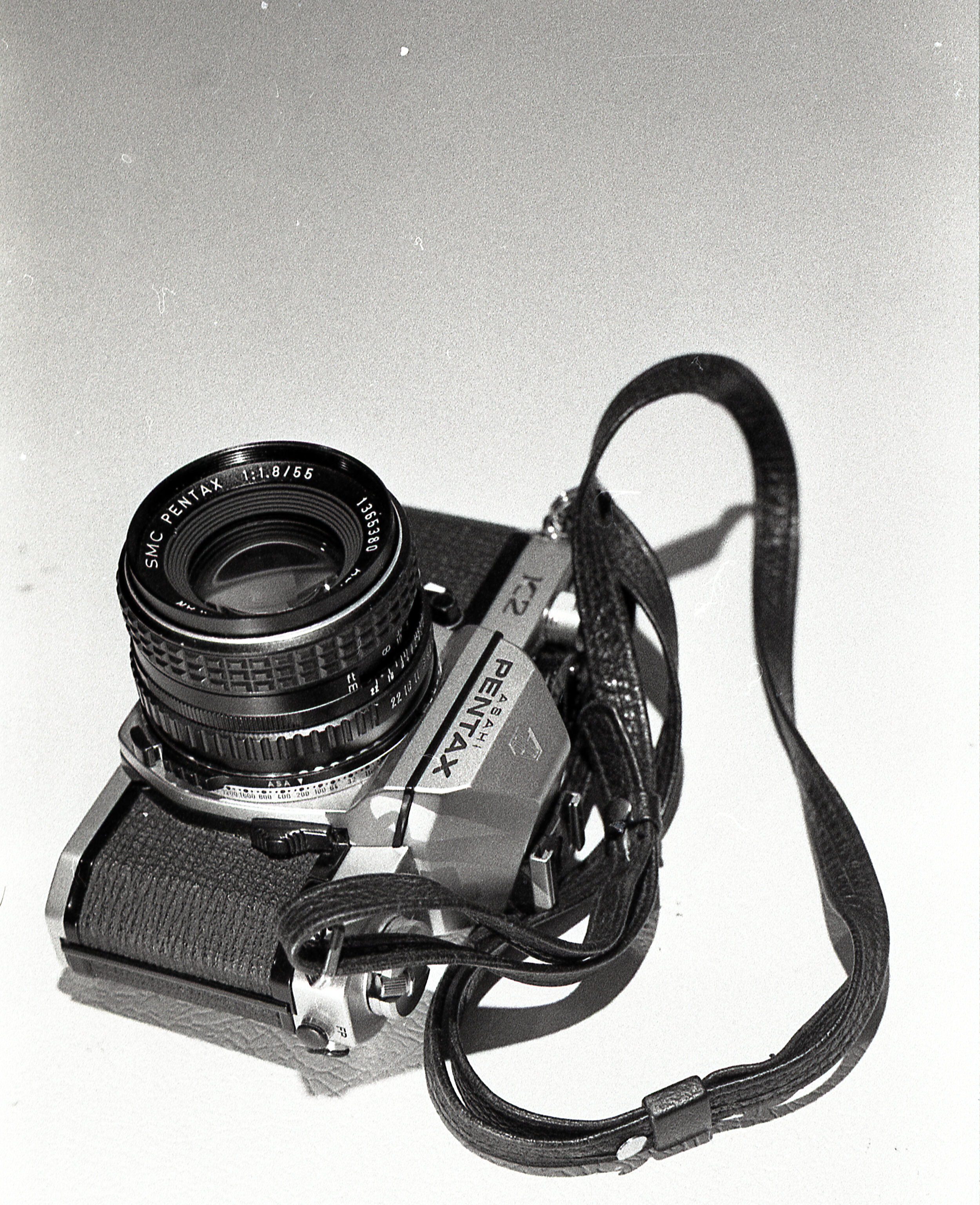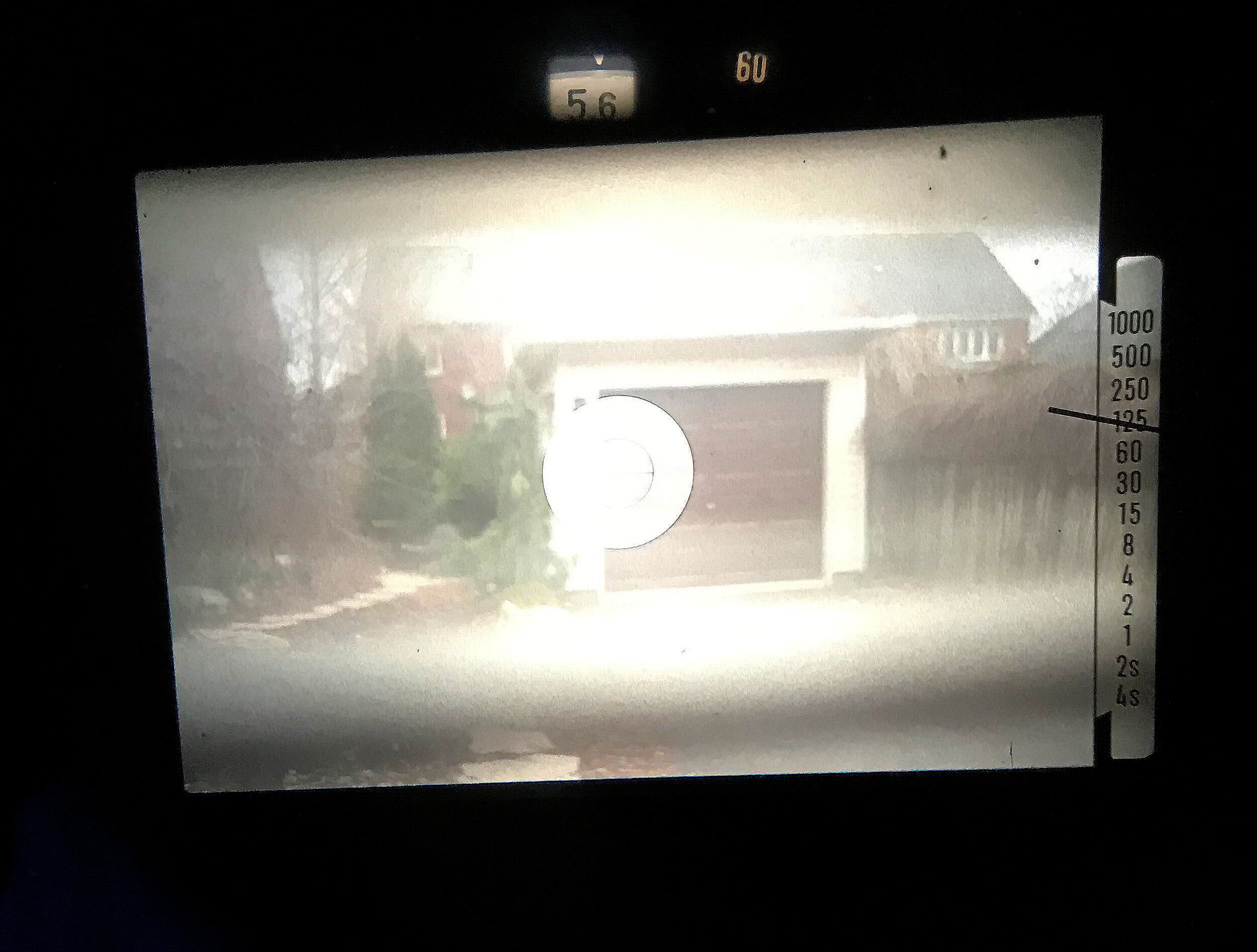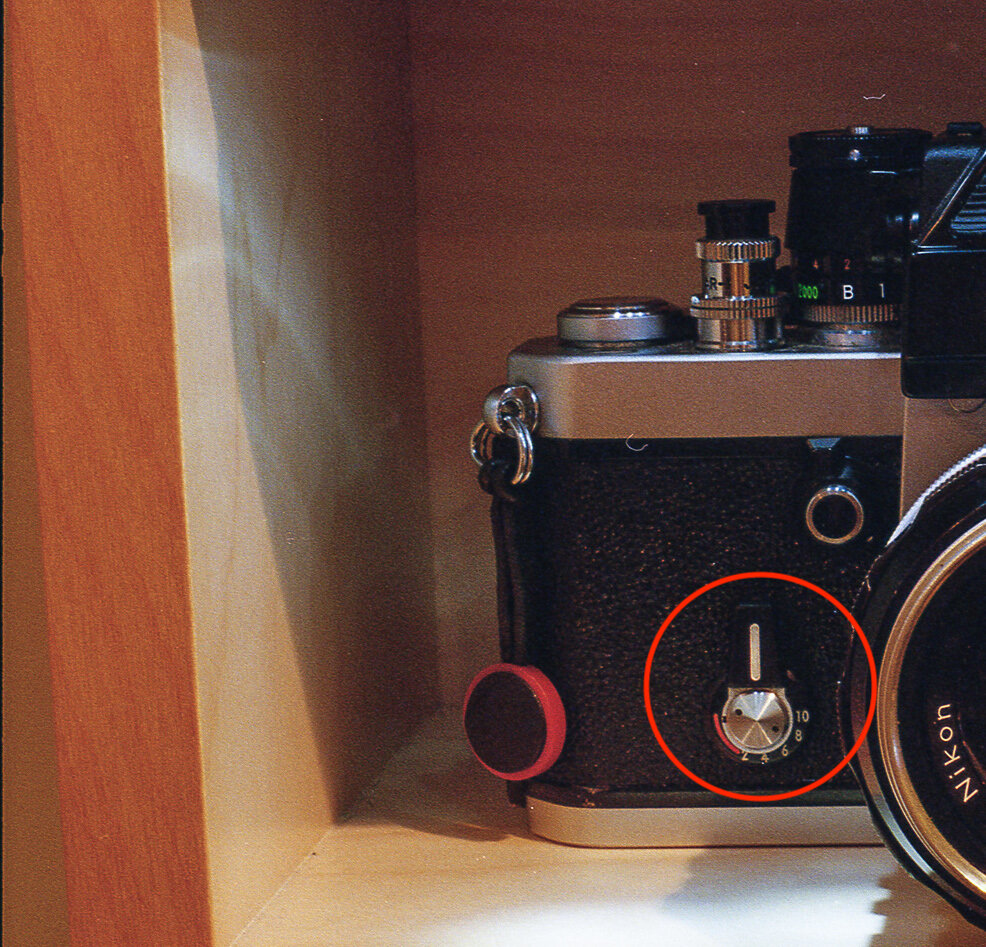Nikkormat FT2 Review
INTRODUCTION
The Nikkormat FT2 is an advanced amateur 35mm film camera made between 1975-1977.
Marketed towards amateur and professional photographers alike - the Nikkormat FT2 was considered the “affordable” Nikon F2 and many professionals considered it to be a very reliable back up camera due to its build quality and reliable mechanical shutter.
Being one of Nikon’s last “hand assembled” cameras, the Nikkormat FT2 is the definition of 1970s camera manufacturing ingenuity and if you get a chance to hold one today in 2021 - the soul of that era will be immediately felt in the way it looks, feels, sounds and operates. The Nikkormat FT2 is for the photographer who prefers the heavy but durable all mechanical body that utilizes an unobtrusive swinging needle system to measure that perfect exposure.
HISTORY
The Nikkormat (also known as the “Nikomat” in Japan), is Nikon’s second generation of consumer cameras to appear on the market in 1965, replacing to the first generation of “Nikkorex” cameras (1960-1965).
Built by a company with a strong reputation for producing the famous Nikon SP Rangefinder (1957) and the legendary Nikon F SLR (1959) - the original Nikkormat FT and FS were the first consumer SLRs that truly felt like the Nikon F at a much more affordable price!
Nikon was a very small company operating out of a single factory in Shinigawa, Tokyo, Japan in the 1950s - despite their massive success in the pro market, entering the consumer market wasn’t exactly an easy process to start. Burdened with orders for the Nikon SP’s and Nikon F’s, the company didn’t have the industrial strength to begin production on more equipment. The solution was to get the help of a fellow Japanese camera manufacturer, Mamiya Co. to take on production tasks.
The Nikkorex 35 (1960) - Photo Credit: Alex Luyckx - Alex has a full written review of this camera. Click the image for more information.
This partnership with Mamiya lead to some interesting twists and turns for Nikon’s reputation as a brand, but in my opinion, it was a necessary risk to break into the consumer market. Not only did the original Nikkorex 35 camera use lower cost and feature reduced parts, they also functioned dramatically different from anything else engineered by Nikon. The Nikkormat 35 used a fixed 50mm f2/8 Nikkor-Q lens, a built in selenium light meter and the fixed focusing screen porroprism viewfinder. The camera also looked completely different, lacking the contoured lines and ergonomics found on their pro counterpart models. It’s not clear if Nikon supplied the design blueprints to Mamiya, but there’s a good chance Mamiya designed the camera but focused more on its functions.
Without getting too deep into the technical specs and performance of each Nikkorex camera made during its production period, each model improved in many areas and sold well enough overall to help Nikon successfully expand into the consumer market. Below is a chronological list of what Nikkorex cameras were released prior to the Nikkormats:
Nikkorex 35 (1960)
Nikkorex 35II (1962)
Nikkorex F (1962)
Nikkorex Auto 35 (1962)
Nikkorex ZOOM 35 (1963)
The Nikkorex F would be the most similar camera to the Nikkormat, since it was the only Nikkorex body that was classified as an SLR compatible with all Nikkor lenses. All other Nikkorex models were designed and engineered around the same concepts of the original Nikkorex 35 (leaf shutters, fixed lenses, and fixed focusing screen porrorprism viewfinders).
A closer looker at the Nikkorex F - it was the only SLR camera with interchangeable lenses compatible with all Nikkor non-AI lenses. Photo Credit: Dnalor_01 - Click image to access wikipedia source.
The Nikkorex F was the first consumer camera to use the durable and rugged copal square shutter - a component that would later be used on the newer Nikkormats and many other future Nikon cameras. For a photographer who couldn’t afford a Nikon F, but was still set on using Nikkor lenses, the Nikkorex F would’ve been the most practical alternative in 1962.
By 1965, the Nikkorex line of cameras would be discontinued as Nikon began to prepare production for the new line of Nikkormats - Nikon also no longer needed to outsource production to Mamiya so the two companies parted ways. The design of the Nikkorex F would be sold to Ricoh, to use for their own re-branded consumer camera: the Ricoh Singlex (also known as the Sears SL11 in North America).
From 1965 to 1978, Nikon would release the following Nikkormat cameras:
Photo Credit: Suvi Korhonen - Click on image to see their full Flikr Profile
Nikkormat FT (1965 - 1967)
Nikkormat FS (1965 - 1971)
Nikkormat EL (1972 - 1976)
Nikkormat FTN (1967 - 1975)
Nikkormat FT2 (1975-1977)
Nikkormat ELW (1976 - 1977)
Nikkormat FT3 (1977- 3 month production)
Nikkormat EL2 (1977 - 1978)
I won’t dive too deep into each camera for this article, but I can say that for the serious amateur photographer upgrading from the Nikkorex F to the Nikkormat FT or FS - it was the perfect balance of price, features and build quality similar to the Nikon F with some unique advantages!
The Nikkormat FT used metal bladed, vertically travelling shutter curtains which allowed for a faster flash sync speed (1/125th) than the Nikon F (1/60th). It was also Nikon’s first consumer camera to use an internal electronic cadmium TTL metering system - giving the photographer accurate “scene average” exposure readings at the widest aperture. The light meter operated similarly to the Nikon F using the “centre the needle” system. The lens mounting system was also the same as the Nikon F that used the “Photomic” meter head.
The Nikkormat FS didn’t sell as well because it didn’t have an internal light meter and mirror lock up like Nikkormat FT. The FS might have appealed to purists who found light meters distracting - however even seasoned pros preferred the FT over the FS because both cameras had reliable fully mechanical shutters. The battery only powered the light meter. Today, the Nikkormat FS is a rarer camera to find on the market and has a higher price tag.
The Nikkormat EL was the first electronic shutter Nikkormat camera to offer manual and aperture priority exposure modes. The camera was powered by LR44 batteries (x4) and only had one mechanical 1/90th shutter speed. Despite the advanced auto exposure features the camera had to offer, the electronic components didn’t appeal to professionals but were probably appreciated by general consumers. Early Nikkormat EL’s were known to have battery issues, but Nikon improved the battery efficiency in the later models.
The Nikkormat FT2 was the most “realized” version of all the mechanical Nikkormats ever released. Unlike the previous FT, FS and FTN models - the FT2 was not only re-wired to use non-toxic batteries just like the Nikkormat EL but it also had a few new features that streamlined the camera’s operation. Plus and minus symbols were added just outside the camera’s external light meter window. The film advance lever had a plastic wrap for added comfort and stability. Grooves were added to ISO dial to ensure the pointer locks into place without slipping while the photographer is mobile - this was a common complaint on the older FT models. A hot shoe was also added to the top of the camera to use electronic flashes. The electronic flash and bulb sync ports were merged to one.
The Nikkormat FT3 along with the re-named “Nikon” EWL and EL2 were all essentially the same cameras but were now equipped with the upgraded latest “SPD” light meters for faster light readings. The lens meter coupling system was also updated to mount with Nikon’s new “Auto Indexing” lenses which made mounting lenses a lot faster too. The Nikon ELW was the only camera capable of using a 2FPS motor drive which was a first for the Nikkormat series.
Despite how great the latest FT3, EWL and EL2 models were - they all lived short life spans as they were replaced by the newer and more compact Nikon FM and FE models. By 1978 the Nikkormat line would finally come to a close.
BUILD QUALITY
The Nikkormat FT2 was one of the last hand-assembled cameras tested by real factory technicians. I could immediately feel the care that was put into building these fine machines.
Although all Nikkormats, including the FT2, were big compared to other compact SLRs being released by the mid-late 1970s - something felt mechanically organic about the traditional 1960s build style of the Nikkormat FT2 - a unique characteristic that is harder to feel in cameras built in the later decades.
1978 Nikon F2 Titan (unmarked)
It is evident that Nikkormat FT2 has the DNA of the Nikon F2 with the difference of having a fixed pentaprism and an OM1 style shutter speed dial. When comparing the two cameras together it becomes evident that the Nikon F2 is the tougher camera overall - especially the titanium version of the F2. Although both cameras are made of magnesium alloy, the Nikon F2 still feels like it has a stronger outer shell but the difference is not too drastic. This doesn’t really that matter that much since the Nikkormat FT2 cannot use motor drives anyways. Despite this, the Nikkormat FT2 shutter curtains are still great for the type of shooting the camera is meant.
1972 Nikon F2 Photomic
USER EXPERIENCE
I honestly wasn’t that impressed by the layout of the Nikkormat FT2 at first. When I saw the camera for the first time on eBay, I initially thought it was a semi-auto film camera because of the lack of a shutter speed dial - it looked pretty boring and unintuitive to use!
After shooting on the Nikon F2SB for over two years now, I felt spoiled by the F2’s iconic design and functions and to judge the Nikkormat FT2 before even trying it was obviously not fair. Despite my feelings about the odd characteristics of the Nikkormat - I was still intrigued and bought one off Kijiji.
When I finally got my hands on one, it didn’t take me long to figure out the Nikkormat FT2’s shutter speed dial is hidden around the lens mount. The weight distribution with a standard 50mm lens had me in love with the camera’s ergonomics right away. The shutter advance lever felt buttery smooth and the shutter clicks sounded great. I’ve seen a lot of people consider the Nikkormat the “poor man’s” Nikon F which is a shame because I now believe the FT2 is a greatly under-rated camera.
Side profile of the Nikkormat FT2 (shutter speed dial visible just behind the lens)
I now own two copies of the Nikkormat FT2 and both are a joy to shoot with - however each camera have their own minor setbacks. The first Nikkormat FT2 has a bad internal light meter but has excellent mechanical functions and is in near perfect condition cosmetically. My other FT2 has a near perfect internal light meter but looks more weathered externally - the “spring return” on the advance lever is also a bit weaker and the opening back feels stiff. Both cameras are completely usable and both print out consistent film negatives with no light leaks! Between the two, it all comes down to what kind of “shooting experience” I want.
Needle leaning slightly to the + (this usually gives me well exposed images, being 1/3 to a half stop over)
The Nikkormat viewfinder is bright and uses a simple interface that doesn’t distract from the composition. I enjoy minimal viewfinder information - the Nikkormat FT2 only displays the shutter speeds and uses a simple “swinging needle” to indicate the exposure value.
Top view of the Nikkormat FT2 (external light meter visible to the left, next to the rewind knob)
There is also a handy external light meter window next to the rewind crank that made me love the Nikkormat FT2 system even more. To roughly meter before composing and focusing is a dream come true. This is excellent for street photography - priming your exposure values, pre-focusing the lens, and getting the shot feels very efficient!
Getting that needle dead centre to get the image properly exposed is also very satisfying. I like to have the needle lean slightly towards the “plus” before taking the shot. It’s a bummer that no visible aperture is displayed inside the viewfinder but I am getting used to it.
The only weird thing about this swinging needle is that it’s “inverted” - down means “over” exposure and up means “under” exposure. The DP-1 and DP-11 meter heads for the Nikon F2 move left (under exposure) and right (over exposure). I am not sure why Nikon made this design choice.
Needle way over the + (over exposure)
I didn’t think I would enjoy the placement of the shutter speed dial, but I quickly learned how intuitive it is to shoot “Olympus” style. The shutter speed dial has an extended lever so that I can adjust the shutter speeds and aperture with my left hand without having to remove my eye from the viewfinder - my right index finger always remains ready on the shutter release. This process makes it a refreshing way to use a camera.
Shutter speed and ISO lever highlighted.
The shutter speed dial lever also doubles as the ISO adjustment switch. The tip of the lever has another small lever that you pull out and hold as you turn the ISO lever at the bottom of the lens mount. This also requires some finger dexterity and some sharp finger nails to do, but it’s not as cumbersome as the Pentax K2 that I described in my previous article.
Opening the back door to load and take out film is a bit of a pain. There is a very small switch at the bottom that needs to be pressed down pretty hard to pop up open the door - sharp finger nails are recommended to do this! The only benefit to this is that it would be hard to accidentally open up a loaded film camera - so I don’t see this design choice impact the user experience too much. It’s also child-proof, so for the photographers who are around curious children - they will have a difficult time opening up the camera when you’re not looking!
Mounting lenses on the Nikkormat FT2 is a bit unwieldy, but once you get used to it, it’s a nice tactile experience. You set your aperture to F5.6 on the lens, mount the lens with the rabbit ears and coupling prong aligned and turn counter clockwise to the widest aperture and then clockwise until you hear a satisfying loud click. This means the lens is locked and the camera light meter is calibrated to the widest aperture on the lens.
Side view of the Nikkormat FT2 (rabbit ear lens attached the camera’s metering tab)
The Nikkormat FT2 is a pre-AI body, meaning that it will only meter lenses that have the “rabbit ear” coupling prong attached. You can meter with “non-rabbit ear AI” lenses, but you have to hold down the “aperture preview” button down while getting a light reading. Thankfully the position of the aperture preview button is conveniently placed near the shutter release, so ergonomically this feels natural.
RECOMMENDATIONS
For people just starting to get into film photography, the Nikkormat FT2 might be too quirky, especially if you’re looking for body with an accurate internal light meter. Although there are FT2’s out there with working light meters, use a handheld meter just in case. Experienced photographers who read light with sunny 16 should have no problem using this mechanical camera since the batteries only power the light meter.
The Nikkormat FT2 today is meant for collectors and experienced shooters in my opinion. Long time Olympus shooters would appreciate the Nikkormat since the shutter speed design is similar. If you like bigger and heavier 1970s style cameras, you will certainly enjoy the FT2 but for a little more money, you can find a Nikon F2 Photomic (F2 bodies seem to have aged a lot better). If you’re looking for something more compact from Nikon that uses the “needle” system - the Nikon FE or FE2 would be my alternative recommendations.
Thank you for reading!


















































































